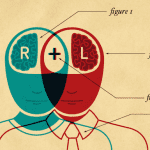 When I was student teaching during my senior year of college, a student entered my classroom during 8th period wearing a t-shirt that said, “The Head Foundation: Give freely, and give often.” I immediately began writing up a disciplinary referral. He was unfazed. In fact, he started to giggle.
When I was student teaching during my senior year of college, a student entered my classroom during 8th period wearing a t-shirt that said, “The Head Foundation: Give freely, and give often.” I immediately began writing up a disciplinary referral. He was unfazed. In fact, he started to giggle.
“You are the first teacher to notice my shirt,” he said.
This student was having a great t-shirt day, and my referral was just icing on the cake.
When I was in high school, we used clothing as our voice. We tried out different clothing languages as we struggled to find ourselves and our acceptance circle. The act of getting dressed every day was a metaphor for our own search for identity. Does this “look” feel like my own skin? If I get that pierced, will people “get” me?
Today this identity-through-dress idea is almost quaint. A student does not pick out a cotton/polyester at H&M in order to express her identity. No, by the time a student has pulled on that t-shirt she has already texted a friend, posted a status, and is ready for her first of many daily selfies. Her identity is not inside her heart, worn on her clothes, or expressed in the music she listens to when she is by herself. Her identity has made its nest in the airwaves. The “Me” that each person should feel in his core is projected into the digital world. Me is that picture. Me is what you see on Instagram. And if you don’t like it, if I don’t have enough likes, followers, and friends, then Me is bad.
But who am I when I’m unplugged? Am I Me? Am I anything at all? Is the Me on Instagram really me?
At the conclusion of my first article about self-worth and social media (read Part 1 here), I asked three questions:
- How do we instill human dignity and worth that is removed from the dystopian result of social media groupthink?
- What are we doing or not doing to reinforce the idea that likes, followers, and friends are important to the self-worth of an individual?
- How do we guide young people and young adults to embrace their own humanity, in spite of the numbers?
As I have engaged faith leaders and friends on these questions, I have come to the conclusion that there is something different between the adolescent search for meaning in 1994 and the adolescent search for meaning in 2014. While some things will never change, the age of social media has changed the game.
What does 2014 have that 1994 didn’t have?
- Quantifiable numbers of likes, followers, and friends.
- Infinite life of embarrassing pictures, quotes, or videos.
- Instant gratification or humiliation or silence for every idea, expression, offering of personality.
- Equal voice to everyone in one’s social sphere.
- Public platform to relay thoughts to every acquaintance, friend, enemy, ex, or frenemy.
- Private, secret spaces that are protected from parental or adult presence.
- Anonymous platforms to give voice to the inner bully in all of us.
But adolescents are still the same. Young people still need time to grow, test out new ideas, reject ideas, test out relationships, live personas, and speak new languages. But when each idea or test is judged by the forum of likes, followers, and friends, how could the result be anything but the old spectrum of conformity and rebellion?
I know my uptight aunt and uncle are going to hate this post. [Hide/block.]
I know my friends will think this picture with my dog is silly. [Adjust privacy settings.]
This skirt looks hawt. [Instagram.]
This article makes a lot of sense to me, but my parents hate CNN. [Hide/Block/Adjust privacy settings.]
As the observers, teachers, parents, ministers, and family to this generation of social media users, we must make a choice. Do we want to be the safe place where these identity experiments are welcomed and appreciated? Do we want to be a place where our teens can dialogue about stupid jokes and political statements? Do we want to keep the tremendous privilege of observing the digital lives of our young people?
Or do we want to be the Internet police?
Do we want to be blocked, categorized, excluded, and left out of their audience of onlookers? Do we want to measure skirts and post helpful blogs-of-guidance? Or do we want to encourage our young people to be braver, stronger, and more outspoken? Do we want to comment on an f-word or on the outrage that provoked it?
When 15 of my peers “like” a post, I feel good.
When one person from my support system “likes” a post or engages it in a heartfelt way, I soar.
The only reasonable response to the Likes, Followers, and Friends dilemma is for caring family and friends to enter the online space to do what the student’s support circle does in person:
- Observe and appreciate.
- Encourage.
- Thoughtfully and sparingly respond.
We have the opportunity to offer the same currency as the adolescent’s peers in likes, followers, and friends.
How will we, the caring church, the loving family, the support system, use that currency?
—













